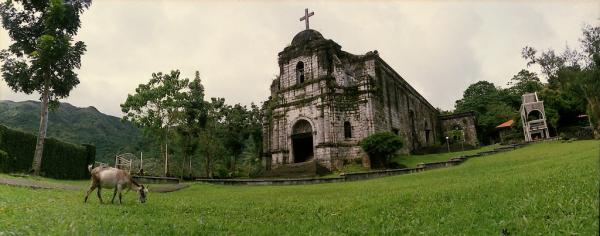Bernardino-Jalandoni Museum
by Jane Dacumos on August 31, 2012The people in Negros Occidental are known for their love and devotion to their culture and history. They have long since been restoring and preserving ancestral houses for future generations to see and appreciate. One of the many ancestral homes that have been converted into a museum is the Jalandoni Ancestral House.
» Read More
Fields Avenue: City's Biggest Entertainment Area
by Jhaypee Guia on August 31, 2012Fields Avenue is the name of a major street running through Balibago area of Angeles City in the Philippines. It is the center of the gogo bar scene of the biggest entertainment district of the Philippines.
» Read More

Clark International Airport
by Jhaypee Guia on August 31, 2012Clark International Airport, formerly Diosdado Macapagal International Airport, is the main airport serving the immediate vicinity of the Clark Freeport Zone and the general area of Angeles City in the Philippines. It also serves the northern and central regions of Luzon; and, being 85 kilometers (53 mi) from the older Ninoy Aquino International Airport (NAIA) that serves Manila, DMIA also serves Metro Manila and its immediate vicinity. It is located on an area of the Freeport zone formerly utilized as the Clark Air Base, which was closed in late 1991 by the U.S. Air Forces after the eruption of Mount Pinatubo.
» Read More

San Francisco Church and Belfry
by Jhaypee Guia on August 31, 2012Constructed in the 17th century, this church’s infirmary and basement served as interrogation and torture halls for Filipinos who were arrested during the peak of the Filipino-Spanish War in 1986. For the colonial masters, the Church was used as a fortress refuging 500 people during the attacks of Filipino revolutionaries Elias Angeles and Felix Plazo in September 1986. Accepting defeat to the Angeles-Plazo forces, it is in this church’s citadels that then Civil Governor of Camarines drafted his letter of surrender consequently offering the Province of Ambos Camarines to the Filipinos.
» Read More

St. John the Baptist Church at Bato, Catanduanes
by Jhaypee Guia on August 31, 2012St. John the Baptist Church was created in 1830 and finished in 1883. It is situated in the town proper. It was built on the site of the first cross planted in Catanduanes to mark the grave of an Augustinian friar, Diego de Herrerra. Herrerra died there in 1576.
» Read More
The Island of Paguriran, Sorsogon
by Jane Dacumos on August 31, 2012Sorsogon is a land of breathtaking scenery as it is blessed with the bounties of nature. The province is home to many world-class islands and beaches where visitors both local and foreign have enjoyed throughout the years, like the scenic island of Paguriran.
» Read More

Urban Lifestyle at Embarcadero de Legazpi
by Jhaypee Guia on August 31, 2012Legazpi in the Bicol Region is a modern and progressive city and is arguably a land still with much potential for further development. Itwas recognized as one of the most competitive cities in the Philippines by the Asian Institute of Management. Also, it was recently cited as the most business-friendly city for the whole South Luzon by the Philippine Chamber of Commerce and Industry (PCCI). Considered as a highlight of its urbanization is the Embarcadero de Legazpi, which is a major waterfront development in Legazpi fronting the main harbor of Legazpi with views towards Mayon Volcano. It consists of retail spaces, restaurants, markets, a major civic space and landmark lighthouse.
» Read More

Our Lady of Peace Grotto of Camarines Sur
by Jane Dacumos on August 31, 2012Our Lady of the Most Holy Rosary, Mother of Peace Grotto is located at the top of Caglago Mountain in Barangay Tabgon, Caramoan, Camarines Sur. A flight of 524 steps (530 if the landing is included) to the grotto leads to the 26-foot image of the Blessed Virgin Mary.
» Read More
The Lovely Haven of Mercedes
by Jane Dacumos on August 31, 2012Mercedes is a world class tourism hub and a key player for the production of renewable energy in Camarines Norte, and the center of excellence for fisheries in Bicol Region, where God-loving, empowered and healthy citizenry are living in a preserved and protected natural environment, with well-planned and functional infrastructure and a vibrant economy under a dynamic and transparent leadership where everyone adheres to the principles of sustainable development.
» Read More
Negros Museum of Bacolod City
by Jane Dacumos on August 31, 2012The Negros Museum represents more than a collection of Filipiniana. At its core are the stories of a people whose consciousness and collective memories go back hundreds of years. Housed in the grand neo-classic structure that is the former Provincial Capitol Building, the Negros Museum presents in a capsule the bounty that is the history, art, and culture of the people of the Negros Island. Through room upon room of art and artifacts, the museum chronicles the lives of the Negrenses, from the opulence characteristic of the heyday of the plantation hacendero to the austerity that marked the years after the collapse of the sugar industry.
» Read More
